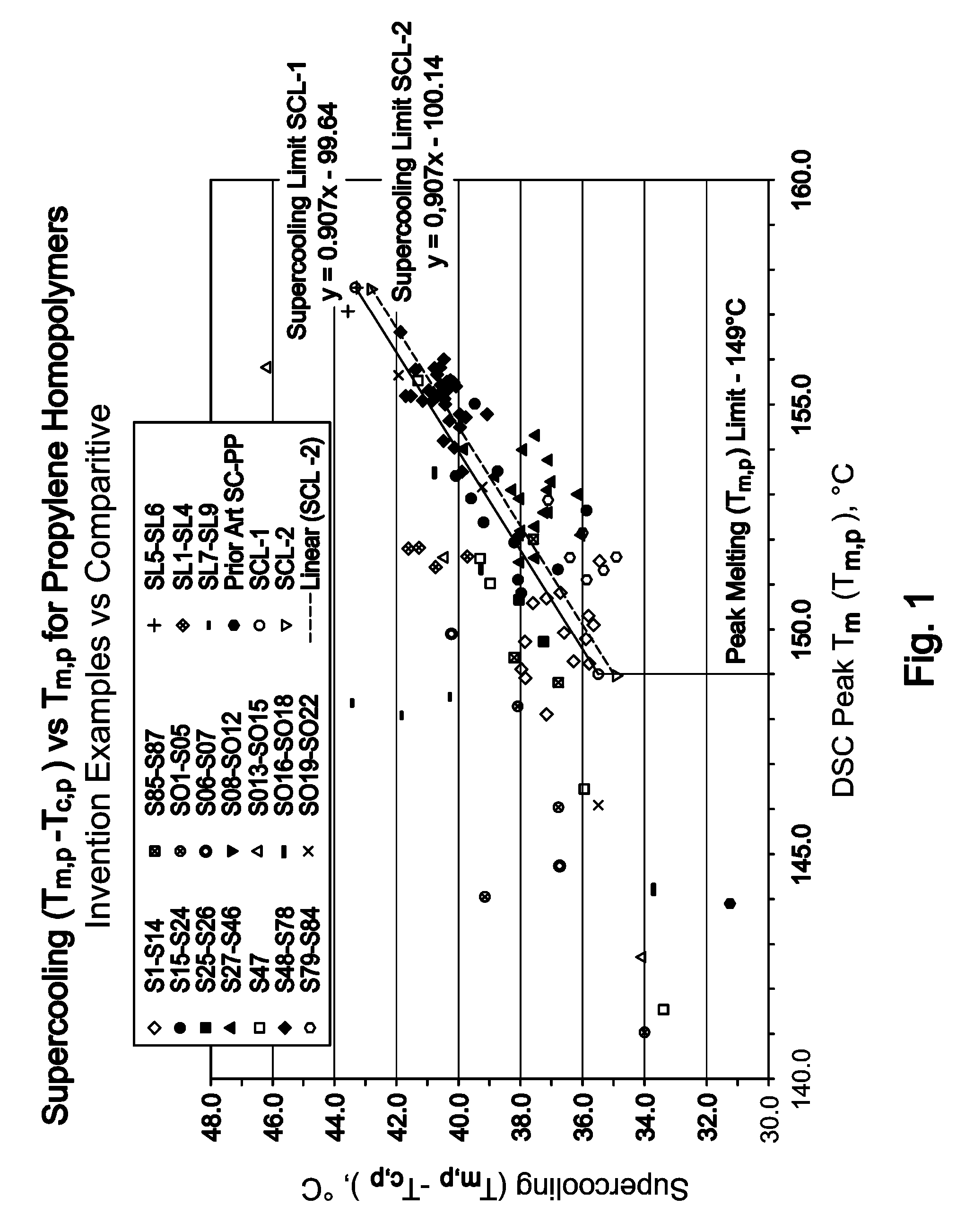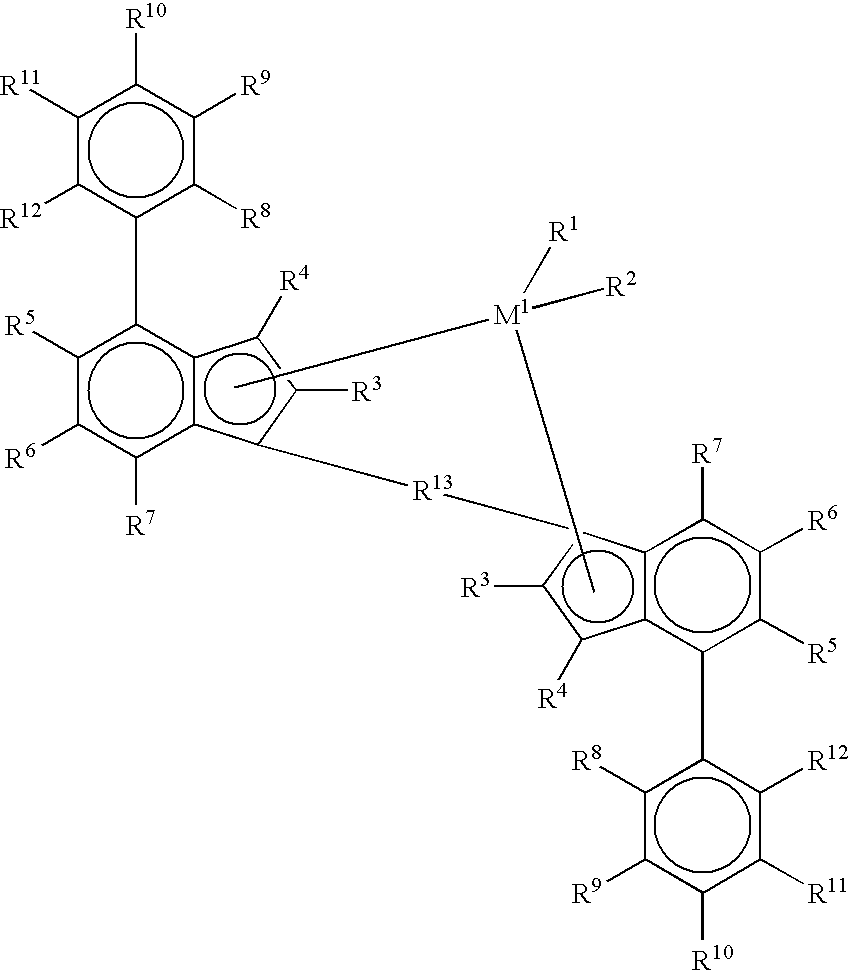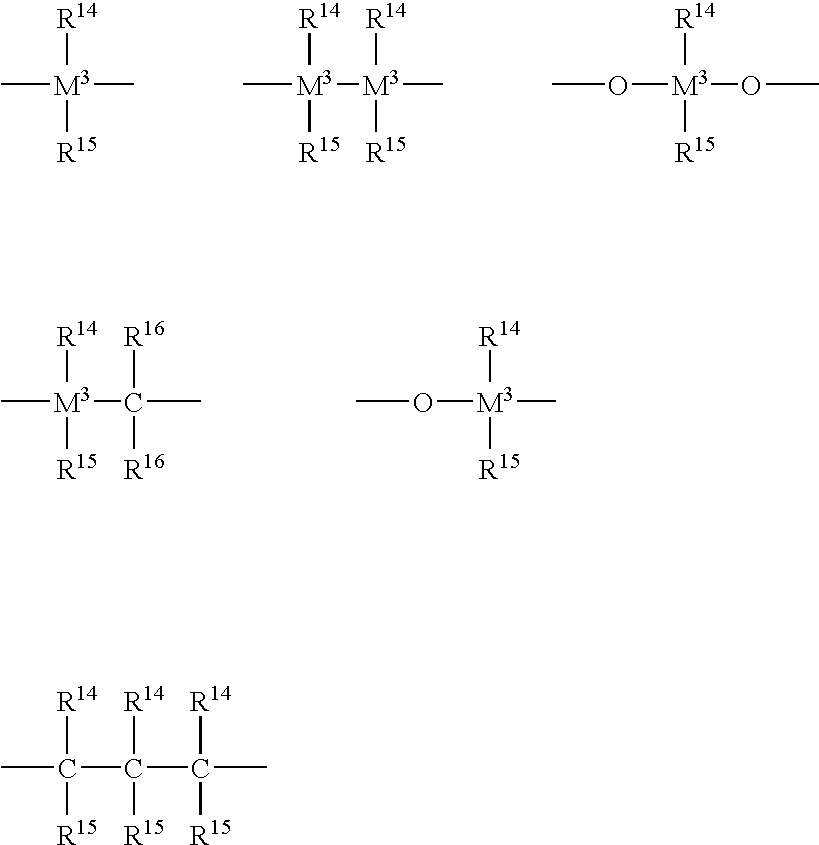Isotactic polypropylene produced from supercritical polymerization process
a polypropylene and supercritical technology, applied in the field of propylene homopolymers, can solve the problems of high pressure conditions, unworkable at temperatures, and inability to specifically disclose bulk propylene polymerization using soluble, unsupported metallocene catalysts
- Summary
- Abstract
- Description
- Claims
- Application Information
AI Technical Summary
Benefits of technology
Problems solved by technology
Method used
Image
Examples
examples
Propylene Polymerization at Supercritical Conditions
[0135]All polymerizations were performed in bulk polymerization systems (i.e., without using solvent, except for what was introduced with the catalyst solution, which did not exceed 10 wt %) and without monomer recycle. All polymerization experiments were performed in a continuous stirred tank reactor (CSTR) made by Autoclave Engineers, Erie Pa. The reactor was designed for operating at a maximum pressure and temperature of 207 MPa (30 kpsi) and 225° C., respectively. The nominal reactor volume was 150 mL with a working volume of 127 mL (working volume lower due to reactor internals). The reactor was equipped with an electric heater and with a stirrer with a magnetic drive. A pressure transducer located on the monomer feed line measured the pressure in the reactor. The temperature was measured inside the reactor using a type-K thermocouple. The reactor was protected against over-pressurization by automatically opening an air-actuat...
PUM
| Property | Measurement | Unit |
|---|---|---|
| peak melting temperature | aaaaa | aaaaa |
| peak melting temperature | aaaaa | aaaaa |
| peak melting temperature | aaaaa | aaaaa |
Abstract
Description
Claims
Application Information
 Login to View More
Login to View More - R&D
- Intellectual Property
- Life Sciences
- Materials
- Tech Scout
- Unparalleled Data Quality
- Higher Quality Content
- 60% Fewer Hallucinations
Browse by: Latest US Patents, China's latest patents, Technical Efficacy Thesaurus, Application Domain, Technology Topic, Popular Technical Reports.
© 2025 PatSnap. All rights reserved.Legal|Privacy policy|Modern Slavery Act Transparency Statement|Sitemap|About US| Contact US: help@patsnap.com



